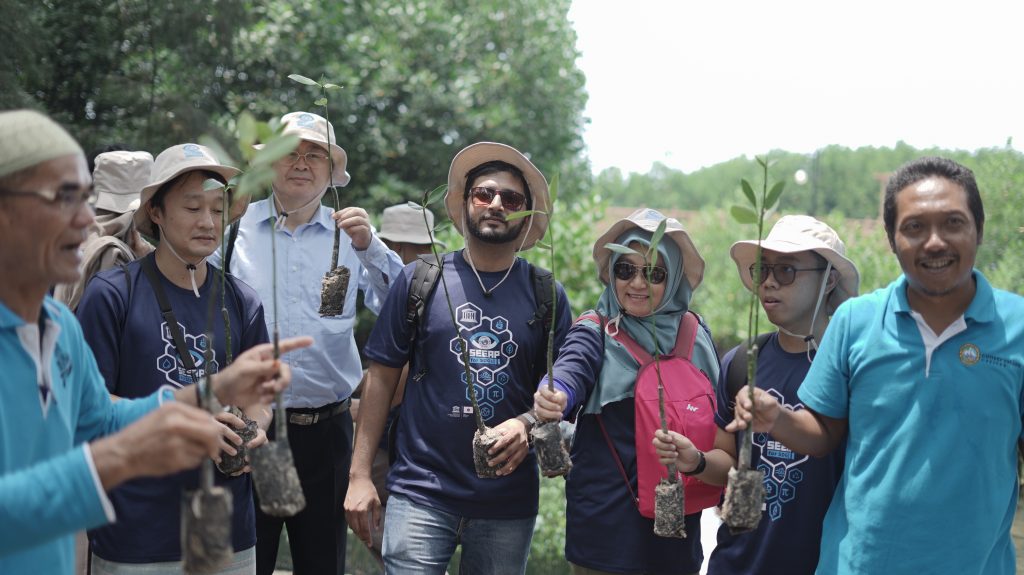
Objective
This project aims to support regional science stakeholders to maintain and expand their networks and accelerate their active use of science knowledge through UNESCO Science programmes.
Relevance
The 2030 Agenda for Sustainable Development, Sendai Framework for Disaster Risk Reduction (2015-2030), and other recent global commitments fully recognize the importance of SETI to address key sustainable development challenges and elaborate evidence-based policies. SETI provides technical solutions to address the impacts of climate change, natural hazards, and natural resource management. As the UN organization with an explicit mandate in the sciences, UNESCO continues to support Member States’ efforts to reform and upgrade national SETI systems and governance[1].
However, there is a gap in Member States’ SETI capacity, which is built on high quality educational and research institutions. The trained manpower and expensive facilities may simply not available in countries with limited resources. As a region, countries may be able to reap resources by banding together to support regional SETI capacity building initiatives that complement national SETI capacity building projects. Past JFIT projects have contributed to strengthen this region’s SETI foundation through institutional capacity building, training for young researchers and professionals, as well as strengthening science networks in the region. Building on these achievements, this project maintains and expands regional science networks and closes gaps between countries as well as disconnects between scientists and society in generating, sharing, and utilizing science knowledge with special focus on inter-disciplinary collaboration[2].
UNESCO promotes a synergetic approach that makes full use of science programmes, UNESCO sites and thematic networks. Interdisciplinary approaches have seen increasing demand for coping with complex challenges on the ground, for creating positive synergy among sectors, and for effective use of limited funding. International collaboration will be an engine of synergy in this increasingly interconnected world where ideas, knowledge, and data flow more freely. However, the practice of fully inter-disciplinary projects that connects UNESCO sites in the region have so far been limited, and continuous assistance for coordination within the science community remains crucial.
Specific planned activities are listed below.
Activity 1: Regional Science Workshop
As the regional Sciences Bureau, UNESCO Office Jakarta is mandated to take a lead to emphasize the need to address the gaps and overlaps at the regional level, promote regional and sub-regional level collaboration, and enhance the visibility of SETI’s contribution collectively, in line with the UN Reform[3] and UNESCO’s Strategic Transformation. The events Fostering Collaboration between UNESCO in the Field and Networks towards the Agenda 2030 (July, 2016) [Bali meeting], and Science to Enable and Empower Asia Pacific for Sustainable Development Goals (July, 2018) [SEE AP] enabled inter-disciplinary UNESCO science stakeholder dialogues in the region. UNESCO Jakarta will host annual regional science workshop which enable science stakeholders to identify regional needs, gaps, and priorities with special focus on common issues and potential collaboration among different disciplines.

Activity 2: Seed pilot projects at UNESCO designated sites to enhance DRR initiatives
Sendai Framework for Disaster Risk Reduction (2015) emphasizes DRR to protect not only people, livelihoods, health, but also cultural and natural heritage, socioeconomic assets and ecosystems. Also, DRR is an area with high demand for support in UNESCO sites based on current UNESCO study, and described in the 39-C/5, SC Main Line Action 2, and Expected Result 4. UNESCO sites have an advantage in DRR popularization due to their educational function, ability and experience to apply scientific knowledge, and strong support from science experts and scientific institutions. DRR is a relatively new field, not yet fully incorporated in the management of UNESCO sites, though some initiatives have started in World Heritage sites. However, its multi-disciplinary nature can serve as a good example to demonstrate synergies among different UNESCO disciplines.
Activity 3: ICT and Sustainability Science
Problem identification, analysis and problem-solving
are the base of scientific analysis and each step requires field observation
and evidence. All sectors from industries, public institutions and civil
societies are producing and making available considerable amounts of open data.
Therefore, ICT is now key for ensuring sustainability, as well as an important
tool for promoting a sustainability science approach across the region.
Relevant news
- The UNESCO Science Family in Asia and the Pacific identifies priority actions to achieve the Sustainable Development Goals (September 2019)
- Regional Stakeholders Chart Science Family’s Role during and after the COVID 19 Pandemic (May 2020)
- Sustainability Insight: Interactive Expert Sessions for Customizing Knowledge Products for New Age Challenges (June 2020)
- Sustainability Insight #2: Fostering Partnerships for Managing Water-Related Disasters (June 2020)
- Sustainability Insight #3: Building Capacity Challenges in Small island Developing States (July 2020)
- JFIT Sustainability Insight #5: Investments in Science, Engineering, Technology and Mathematics (STEM) for SDGs (July 2020)
- JFIT Sustainability Insight #7: Post Covid Climate Justice – reaching the unreachable! (July 2020)
- JFIT Sustainability Insight #9: Evidence Base for Environmental Justice and Sustainability (July 2020)
- JFIT Sustainability Insight #11: Crossing Disciplines to Reduce Water Inequalities (August 2020)
- JFIT Sustainability Insight #13: Nexus between nature-based solutions and ecosystem services (August 2020)
- JFIT Sustainability Insight #15: Ecohydrology a Transdisciplinary Tool for Water Security (September 2020)
- JFIT Sustainability Insight #17: Pathways for Realising Water Security Across Borders (September 2020)
- JFIT Sustainability Insight #19: Youth Leaders for Climate Change Resilience (October 2020)
- JFIT Sustainability Insight #21: From Water Management to Water Economy (October 2020)
- JFIT Sustainability Insight #23: From Water Management to Water Economy (October 2020)
- JFIT Sustainability Insight #25: Knowledge Networks and Harnessing Resilience Against Disasters (October 2020)
Relevant Publications
- Science to enable and empower Asia Pacific for COVID-19 response: webinar report (Published in 2020)
- Science to Enable and Empower Asia Pacific for SDGs 2 (SEE-AP 2): key outputs and way forward (Published in 2020)
- Fostering science networks in Asia and the Pacific: contribution of Japanese Funds-in-Trust projects (Published in 2019)
[1] 2014-2021 UNESCO Mid-term strategy 37c
[2] 2014-2021 UNESCO Mid-term Strategy 37c
[3] UN Development Reform, III Revamping the regional approach

Recent Comments